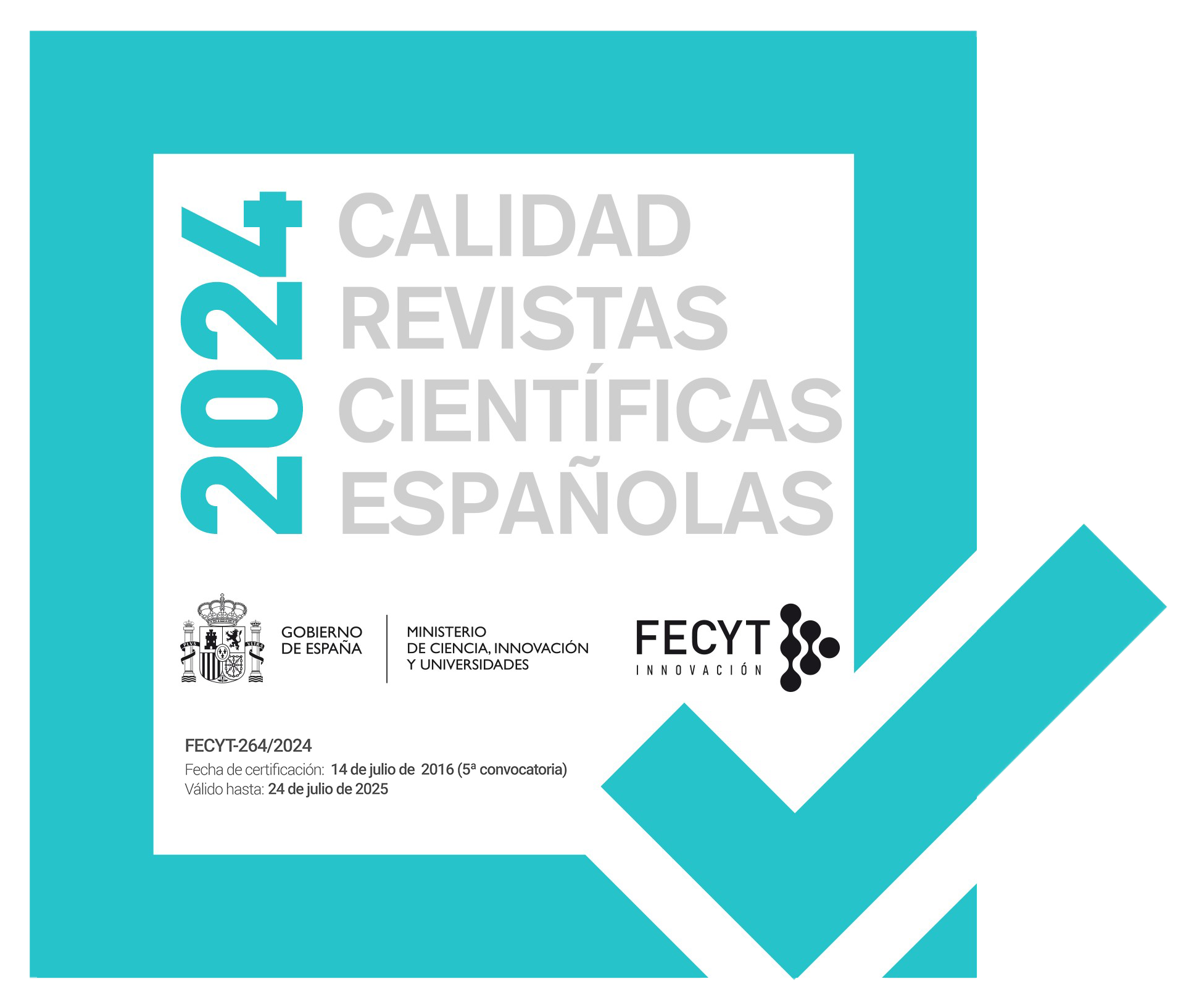Cement-rock interaction: Infiltration of a high-pH solution into a fractured granite core
DOI:
https://doi.org/10.1344/105.000001531Keywords:
Reactive transport modeling, Cement, Granite, Fracture, High-pH plumeAbstract
Within the framework of the HPF project (Hyperalkaline Plume in Fractured Rock) at the Grimsel Test Site (Switzerland), a small scale core infiltration experiment was performed at the University of Bern. A high-pH solution was continuously injected, under a constant pressure gradient, into a cylindrical core of granite containing a fracture. This high-pH solution was a synthetic version of solutions characteristic of early stages in the degradation of cement. The interaction between the rock and the solutions was reflected by significant changes in the composition of the injected solution, despite the negligible pH-buffering capacity, and a decrease in the permeability of the rock. Changes in the mineralogy and porosity of the fault gouge filling the fracture were only minor. Within the new LCS (Long-Term Cement Studies) project at Grimsel, new one-dimensional reactive transport modeling using CrunchFlow has been used to improve the interpretation of the experimental results. Dispersive and advective solute transport, adsorption processes and mineral reaction kinetics have been taken into account. The evolution of solution composition is mainly controlled by dissolution/precipitation reactions. Adsorption processes (cation exchange, surface complexation) only play a role in the very early stages of the experiment.References
Berner, U.R., 1988. Modelling the incongruent dissolution of hydrated cement minerals. Radiochimica Acta, 44/45, 387-393.
Berner, U.R., 1992. Evolution of pore water chemistry during degradation of cement in a radioactive waste repository en-vironment. Waste Management, 12, 201-219.
Bossart, P., Mazurek, M., 1991. Structural Geology and Water Flow-Paths in the Migrations Shear Zone. Wettingen (Swit-zerland), Nagra Technical Report, 91-12.
Bradbury, M.H., Baeyens, B., Geckeis, H., Rabung, Th., 2005. Sorption of Eu(III)/Cm(III) on Ca-montmorillonite and Na-illite. Part 2: Surface complexation modelling. Geochimica et Cosmochimica Acta, 69, 5403-5412.
Eikenberg, J., Hoehn, E., Fierz, T., Frick, U., 1994. Grimsel test site: Preparation and performance of migration experiments with radio-isotopes of sodium, strontium and iodine. Paul Scherrer Institut report, Villigen (Switzerland), Nationale Genossenschaft für die Lagerung radioaktiver Abfälle, Nagra Technical Report, 94-11, 71pp.
Kulik, D.A., Kersten, M., 2001. Aqueous solubility diagrams for cementitious waste stabilization systems: II, end-member stoichiometries of ideal calcium silicate hydrate solid solu-tions. Journal of the American Ceramic Society, 84, 3017-3026.
Mäder, U.K., Ekberg, Ch., 2006. GTS-HPF Project: Geochemical Evolution of Porewater in the Granitic Shear Zone AU-126 during 3 Years of Interaction with a Hyperalkaline Fluid, and its Interpretation. Wettingen (Switzerland), Nagra Technical Report, 06-08, 133pp.
Mäder, U.K., Fierz, Th., Frieg, B., Eikenberg, J., Rüthi, M., Al-binsson, Y., Möri, A., Ekberg, S., Stille P., 2006. Interaction of hyperalkaline fluid with fractured rock: Field and labora-tory experiments of the HPF project (Grimsel Test Site, Swit-zerland). Journal of Geochemical Exploration, 90, 68-94.
Marty, N., Burnol, A., Gaucher, E.C., 2009. Influence of Dissolution/Precipitation Kinetics on the Porosity Clogging Effect during Cement/Clay Interaction. Orléans (France), Bureau de Recher-ches Géologiques et Minières, Report-56236-FR, 120pp.
Mazurek, M., 2003. Mineralogal - Geochemical Characterisation of the Shear Zone at AU 126m in Support of the HPF Experi-ment. Wettingen (Switzerland), Unpublished Nagra Internal Report NIB, 03-16, 28pp.
Pfingsten, W., Paris, B., Soler, J.M., Mäder, U.K., 2005. Tracer and reactive transport modelling of the interaction between high-pH fluid and fractured rock: Field and laboratory ex-periments. Journal of Geochemical Exploration, 90, 95-113.
Rochelle, C.A., Noy, D.J., 2000. GTS/HPF: Mineral Reaction Kinetics under Alkaline Conditions - Review of Literature for Selected Materials. Wettingen (Switzerland), Nagra In-ternal Report, Unpublished, NIB 00-28, 28pp.
Soler, J.M., Mäder, U.K., 2005. Interaction between hyperal-kaline fluids and rocks hosting repositories for radioactive waste: Reactive transport simulations. Nuclear Science and Engineering, 151, 128-133.
Soler, J.M., Mäder, U.K., 2007. Mineralogical alteration and as-sociated permeability changes induced by a high-pH plume: Modeling of a granite core infiltration experiment. Applied Geochemistry, 22, 17-29.
Soler, J.M., Pfingsten, W., Paris, B., Mäder, U.K., Frieg, B., Neall, F., Källvenius, G., Yui, M., Yoshida, P., Shi, P., Ro-chelle, C.A., Noy, D.J., 2006. Grimsel Test Site - Investiga-tion Phase V. HPF-Experiment: Modelling report. Wettingen (Switzerland), Nagra Technical Report NTB, 05-01, 176pp.
Steefel, C.I., 2008. CrunchFlow. Software for Modeling Mul-ticomponent Reactive Flow and Transport. User’s Manual. Earth Sciences Division, Berkeley (USA), Lawrence Berke-ley National Laboratory, 90pp.
Wolery, T.J., Jackson, K.J., Bourcier, W.L., Bruton, C.J., Viani, B.E., Knauss, K.G., Delany, J.M., 1990. Current status of the EQ3/6 software package for geochemical modeling. In: Mel-chior, C., Bassett, R.L. (eds.). Chemical Modeling of Aque-ous Systems II. ACS Symposium Series, 416, 104-116.
Downloads
Published
Issue
Section
License

This work is licensed under a Creative Commons Attribution-ShareAlike 4.0 International License.
Copyright
Geologica Acta is the property of the UB, GEO3BCN, IDAEA and UAB. Geologica Acta must be cited for any partial or full reproduction. Papers are distributed under the Attribution-Share Alike Creative Commons License. This license allows anyone to reproduce and disseminate the content of the journal and even make derivative works crediting authorship and provenance and distributing possible derivative works under the same or an equivalent license.
Author Rights
Authors retain the copyright on their papers and are authorized to post them on their own web pages or institutional repositories. The copyright was retained by the journal from the year 2003 until 2009. In all cases, the complete citation and a link to the Digital Object Identifier (DOI) of the article must be included.
The authors can use excerpts or reproduce illustrations of their papers in other works without prior permission from Geologica Acta provided the source of the paper including the complete citation is fully acknowledged.




